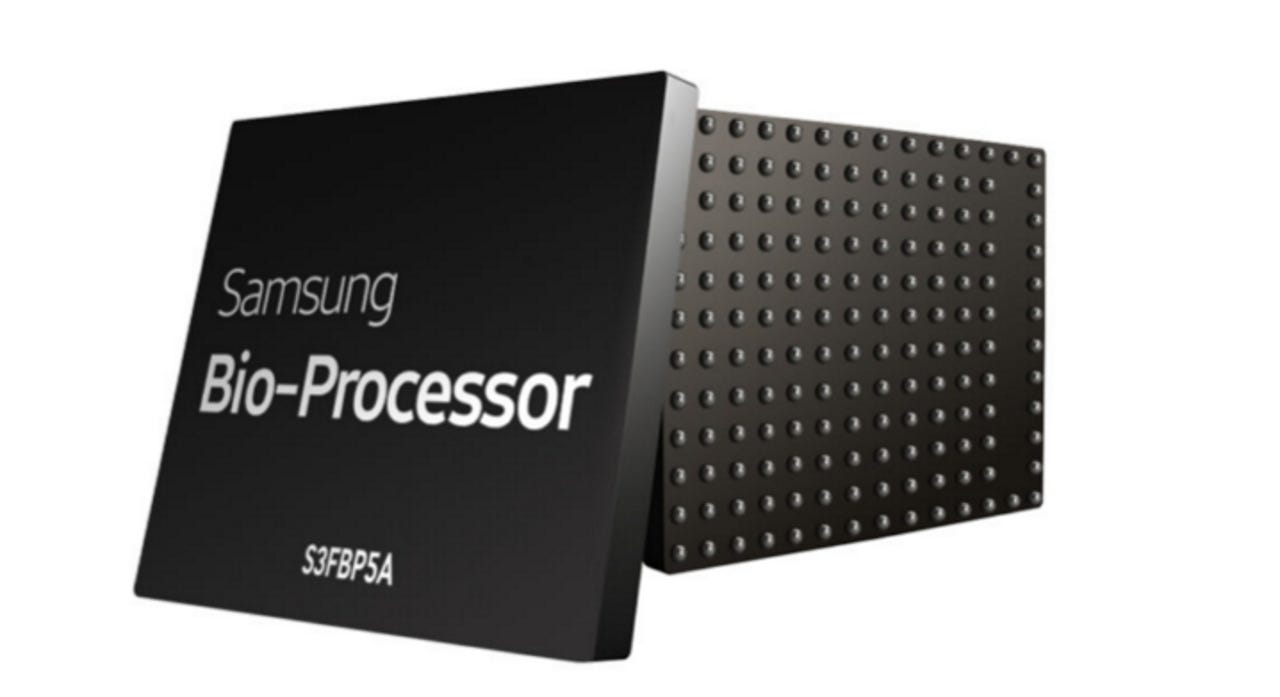Samsung, Panasonic highlight how components set next stage for wearable innovation

With CES 2016 kicking off next week gadgets and wearable devices will garner a lot of attention, but components within the electronics are likely to feature the most innovation.
Two current examples of how components will drive wearable device innovation turned up this week from Samsung and Panasonic.
For instance, Samsung said that its Bio-Processor is now in mass production. This system on a chip is designed to monitor five different biometric signals so health and fitness devices can track more. There is also likely to be a role for this system on a chip in healthcare too.
Also see: CNET's CES 2016 coverage | Samsung smart TVs will all be IoT compatible from 2016
Samsung's Bio-Processor takes up a fourth of the space as the parts in wearable devices today because things like memory, circuits, power management and digital signal processors are integrated into one. The upshot is that the chip will allow devices to become smaller.
The Bio-Processor will have front ends for bioelectrical impedance analysis, photoplethysmogram, electrocardiogram, skin temperature, and galvanic skin response. As a result, wearables could be used to measure body fat, and skeletal muscle mass, heart rate, heart rhythm, skin temperature and stress level.

Samsung has reference designs ranging from wrist bands to patches. The company added that devices in 2016 will have the Bio-Processor.
What's not clear from Samsung's release is how much power this processor will use. Rest assured other announcements on the component front will revolve around power savings and charging, which is a pain for wearable devices today. For example, I don't need to know that my body fat is 12 percent daily and would happily forgo that information from a wearable device for a once-a-month charging schedule.
While Samsung's impact with its Bio-Processor will be seen quickly, an announcement from Panasonic outlines what's coming down the wearable line.
Panasonic outlined a stretchable polymer resign film that's soft, flexible and can be coupled with its transparent electrode material and a paste to create electronics that adapt to anything. Stretchable electronic devices could be used in clothing and wearable devices, sensors and robots.
Once stretched, Panasonic's electronic film bounces back to its original condition. "Against the backdrop of the development of various wearable devices, there is a growing demand for reduced odd feel from wearing them and more aesthetically pleasing design, as well as for a smaller size and thinner profile," said Panasonic, which will show off its technology at the 17th Printed Wiring Boards Expo in Tokyo January 13 to 15.
Panasonic's technology is notable even though it doesn't appear to be coming to a device near you soon. The technology does ensure that wearables will remain interesting for the foreseeable future.